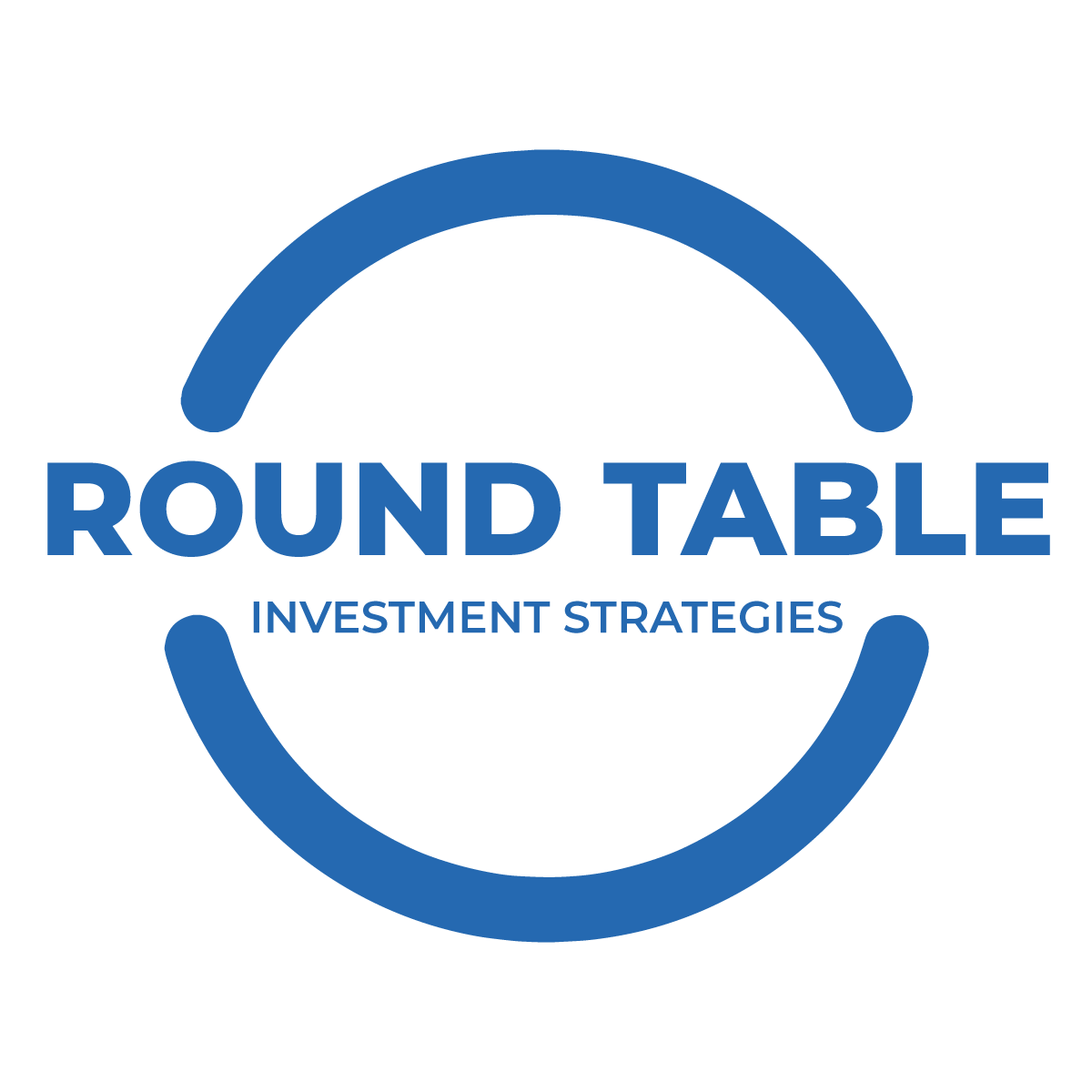If I had a nickel for every time someone asked (or told) me about the latest “hot dot” investment, then I would have…I don’t know, a few bucks I guess, but still this has happened a lot.
The last couple years produced an unusually large number of “hot dot” investments—investment opportunities long on buzz, boasting impressive, FOMO-inducing recent track records, but often rather short on fundamental sense. As financial advisors, we often find ourselves explaining that we don’t invest in the latest thing with the loudest buzz,[1] and why.
In a year in which stocks and bonds and most other things have all hit a rough patch, it’s hardly surprising that these buzzy options lost value as well. Yet the magnitude of their losses is notable nonetheless. Here is a partial list of erstwhile hot dots that have, shall we say, cooled considerably of late:
SPACs
“Special purpose acquisition companies” (SPACs) are a nonstandard means for private companies to go public, by merging with a publicly traded shell. They became all the rage among hot dot investors for a while. A SPAC-focused ETF that launched, gained about 40%, then lost nearly 60%, and then folded—all in the space of 18 months!—is a classic example of a hot dot investment pattern:
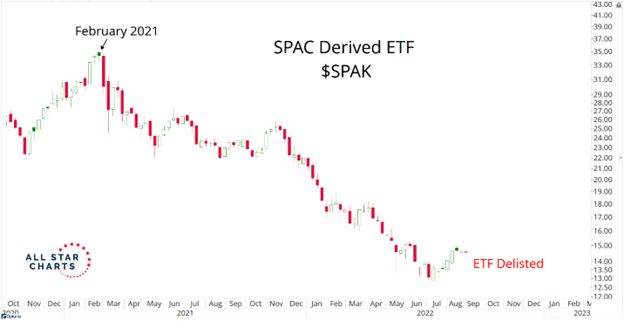
Meme Stocks
If your preferred investment approach entails big bets on stocks promoted by aliases on Reddit who propound investment theses invoking evil plots by institutional short-sellers to depress the stock prices of unprofitable, cash-hemorrhaging companies, that strategy may not have worked out great for you in 2022:
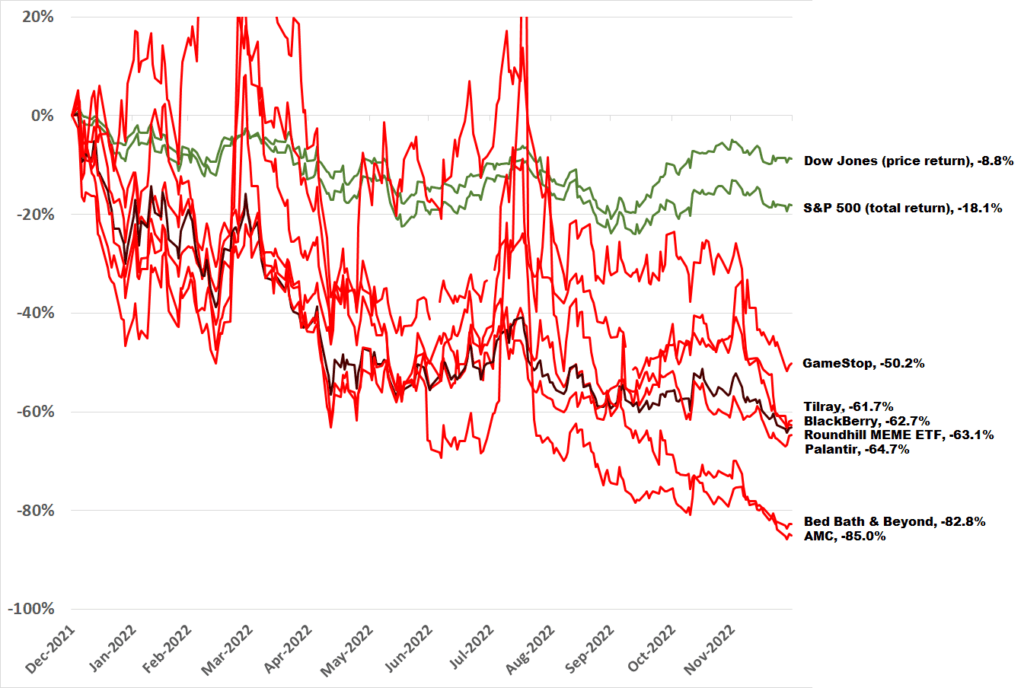
Dow Jones Industrial Average and S&P 500 Index data owned by S&P Dow Jones Indices
Cryptocurrencies
What with the 70%+ drop in bitcoin, even greater losses in most other cryptos, the death spiral of Terra/Luna’s algorithmic stablecoin protocol, and the collapse of crypto exchange FTX (and others), I suppose we can at least credit cryptocurrencies with maintaining a buzz of sorts in 2022?
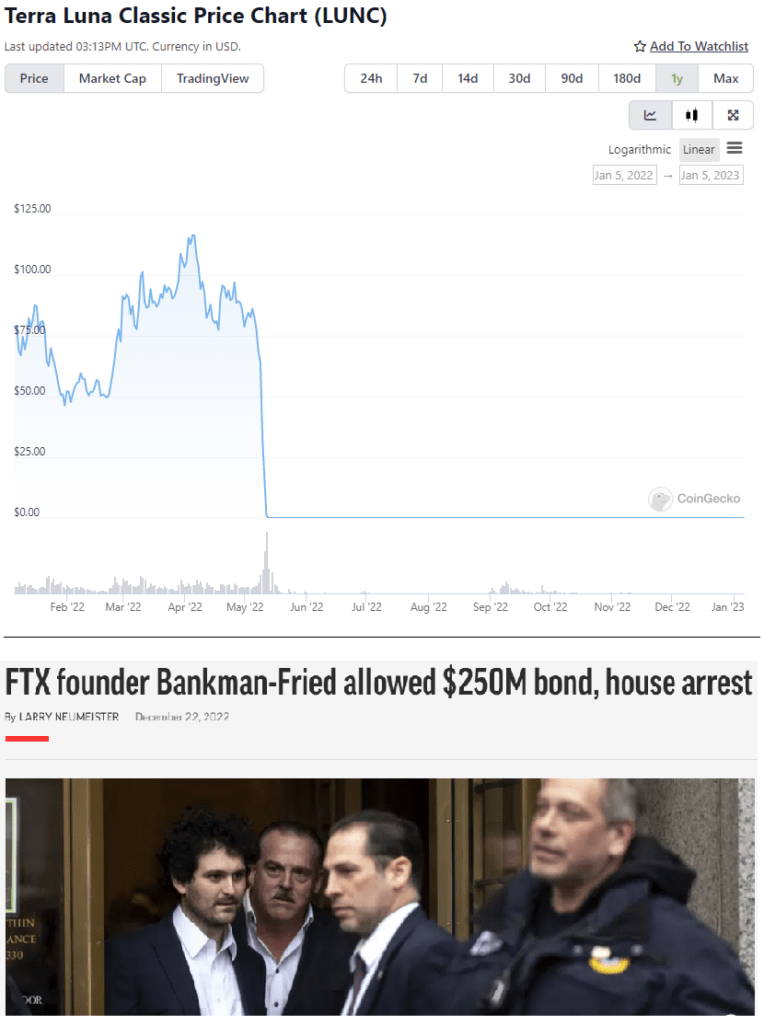
https://apnews.com/article/ftx-sam-bankman-fried-ny-court-updates-e51c72c60cd76d242a48b19b16fd9998
NFTs
Speaking of crypto stuff, the proposition of laying immutable claim (until stolen) to ownership of a blockchain address associated with a URL that points (or doesn’t) to a digital image of an asset that you most definitely do not own was apparently an extremely attractive value proposition for a while. Its attractiveness is somewhat lessened of late.
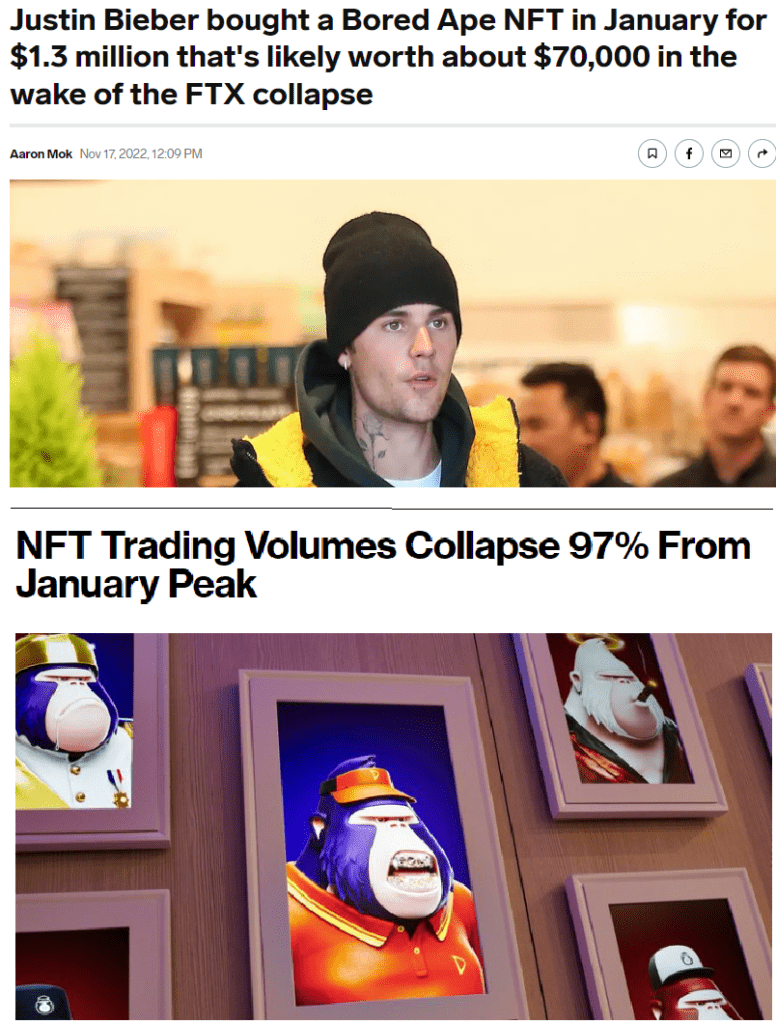
Tesla
While there are any number of famed large growth stonks we could choose from for this section, Tesla seemed rather the buzziest. So, like, I dunno, is this Twitter’s fault? –
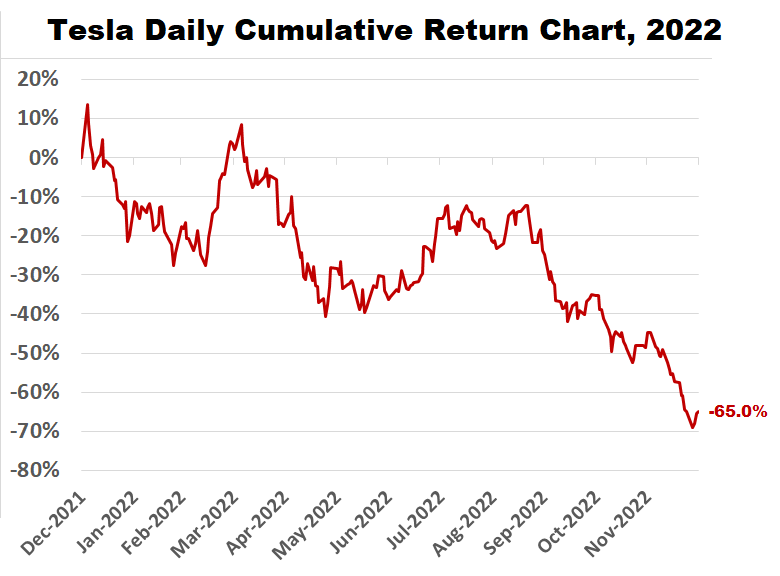
The total equity value[2] Tesla has lost is greater than the gross domestic product of 190 of the world’s 207 countries. Congrats to Indonesia for making more than Tesla lost.
ARKK
An occasional thing that happens is a fund manager posts spectacular returns, achieves rockstar status, attracts a huge amount of inflows from investors, and then proceeds to lose more money for clients in the subsequent drawdown than was ever made in the original runup. Ark Invest is the latest breathtaking example of this phenomenon. With its investments in ostensibly innovative low-to-negative profitability stocks with high price-to-book ratios and significant ongoing capital requirements, the flagship ARKK ETF is heavily concentrated in what may be the lowest expected return segment of the stock market.
So when, at the end of an already difficult year in 2021, Ark’s Cathie Wood predicted 40% annualized returns for her strategies over the next five years, I was sufficiently flabbergasted by what I deemed the irresponsibility of such an outlandish projection that I (under the pseudonym “SNARKK”) took to minting NFTs tracking her “progress” toward that goal, thus combining two of the hot dots about which I am most skeptical into a single meta-joke.
I grew bored of the NFT angle faster than an ape,[3] but had I continued, here’s what the latest image you could have owned (or rather, to which the URL on a blockchain address you could have owned would have pointed) would have looked like:
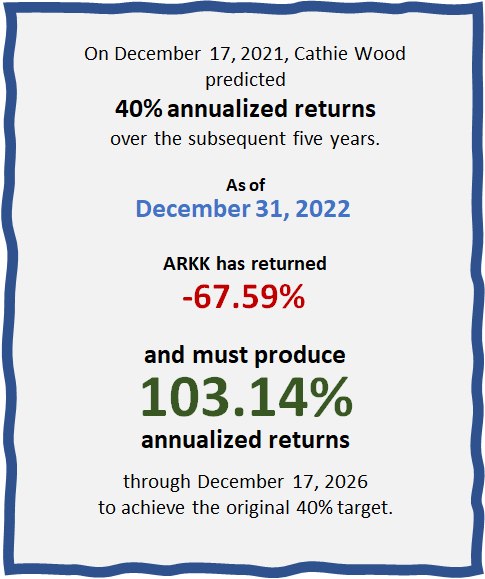
That’s right: ARKK performance has been so bad that the fund would have to post triple-digit annualized performance for the next four years for the original five-year prediction to prove correct! As the December 2026 deadline approaches, the shrinking horizon will render the annualized figure in green preposterously large, but for the fund to have attained a three-figure compound return requirement in just 20% of the original five-year timeline is…impressive, in a way.
Okay, if not hot dots, how else might we invest?
At Round Table, we seek to align our clients’ investment assets to their individual circumstances, goals, and needs. Insofar as this means investing for portfolio growth, we utilize broadly diversified fund products that collectively buy a high percentage of the stocks available across the entire global stock market, with moderate tilts toward factors that have higher expected returns, per financial theory and empirical research.
Notably, this means our portfolios might even include some allocations to hot dot investments. For example, Tesla is an underlying holding in our models. But in keeping with our philosophy about the benefits of diversification, it is one of thousands of underlying stock holdings, rather than a concentrated position.[4]
In other words, we allow hot dots to tell us neither how to invest nor how not to invest. We stick to our principles instead.
[1] Except insofar as we would have invested in it anyway—whatever it may be—as part of our stable of broadly diversified glidepath portfolios. See the closing section.
[2] $894 billion in market cap was lost from the all-time high for TSLA in November 2021 to the latest low on January 3rd.
[3] Also a weak NFT joke. If you don’t get it, count your blessings.
[4] Also, insofar as “hot dot” companies are ordinarily “growth” stocks (i.e., stocks with high relative valuations), our portfolios will typically underweight them somewhat, relative to a pure market cap-based weighting.
DISCLOSURES: All content is provided solely for informational purposes and should not be considered an offer, or a solicitation of an offer, to buy or sell any particular security, product, or service. Round Table Investment Strategies (Round Table) does not offer specific investment recommendations in this presentation. This article should not be considered a comprehensive review or analysis of the topics discussed in the article. Investing involves risks, including possible loss of principal. Despite efforts to be accurate and current, this article may contain out-of-date information, Round Table will not be under an obligation to advise of any subsequent changes related to the topics discussed in this article. Round Table is not an attorney or accountant and does not provide legal, tax or accounting advice. This article is impersonal and does not take into account individual circumstances. Reading this article does not create a client relationship with Round Table. An individual should not make personal financial or investment decisions based solely upon this article. This article is not a substitute for or the same as a consultation with an investment adviser in a one-on-one context whereby all the facts of the individual’s situation can be considered in their entirety and the investment adviser can provide individualized investment advice or a customized financial plan.
The data shown in this article is for informational purposes only and should not be considered as an investment recommendation or strategy, or as an offer to buy or sell any particular security, product, or service. Past performance may not be indicative of future results. While the sources of data included in any charts/graphs/calculations are believed to be reliable, Round Table cannot guarantee their accuracy.
